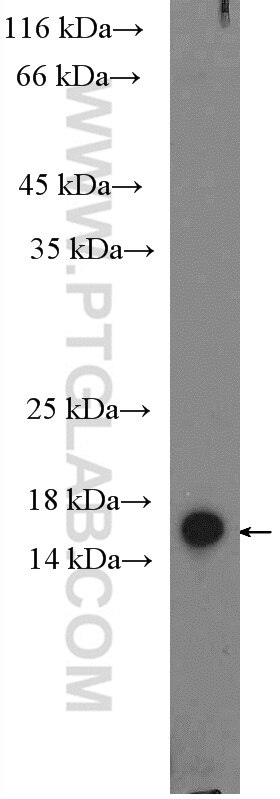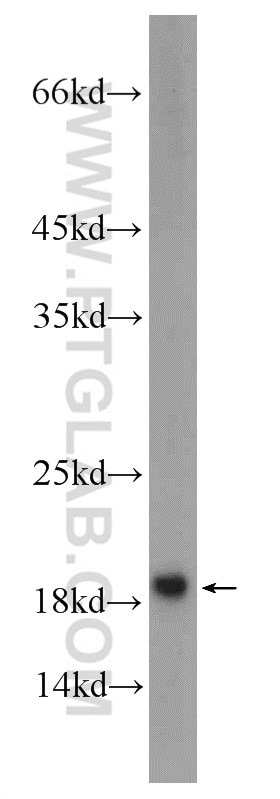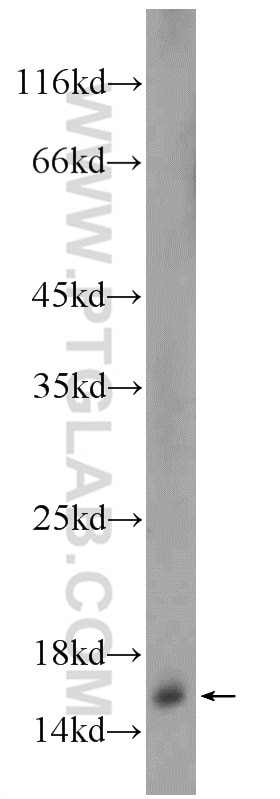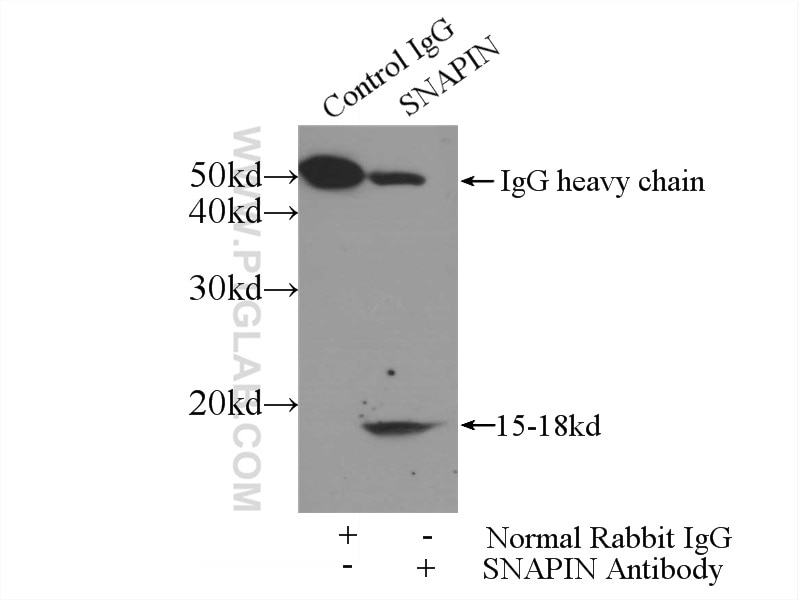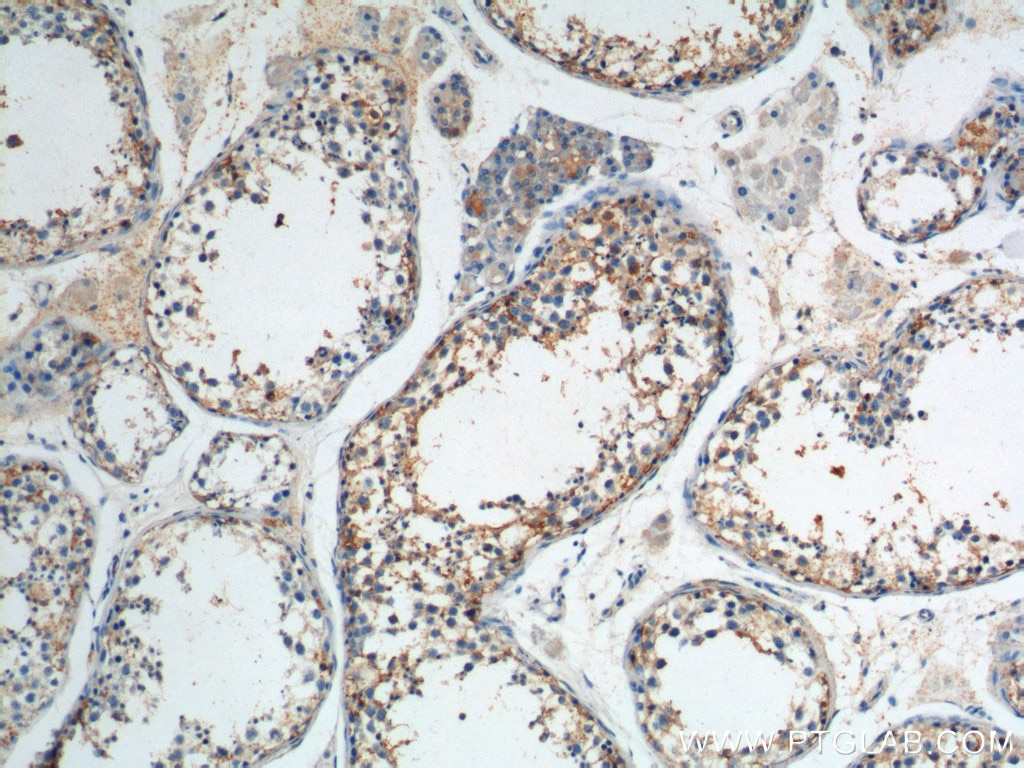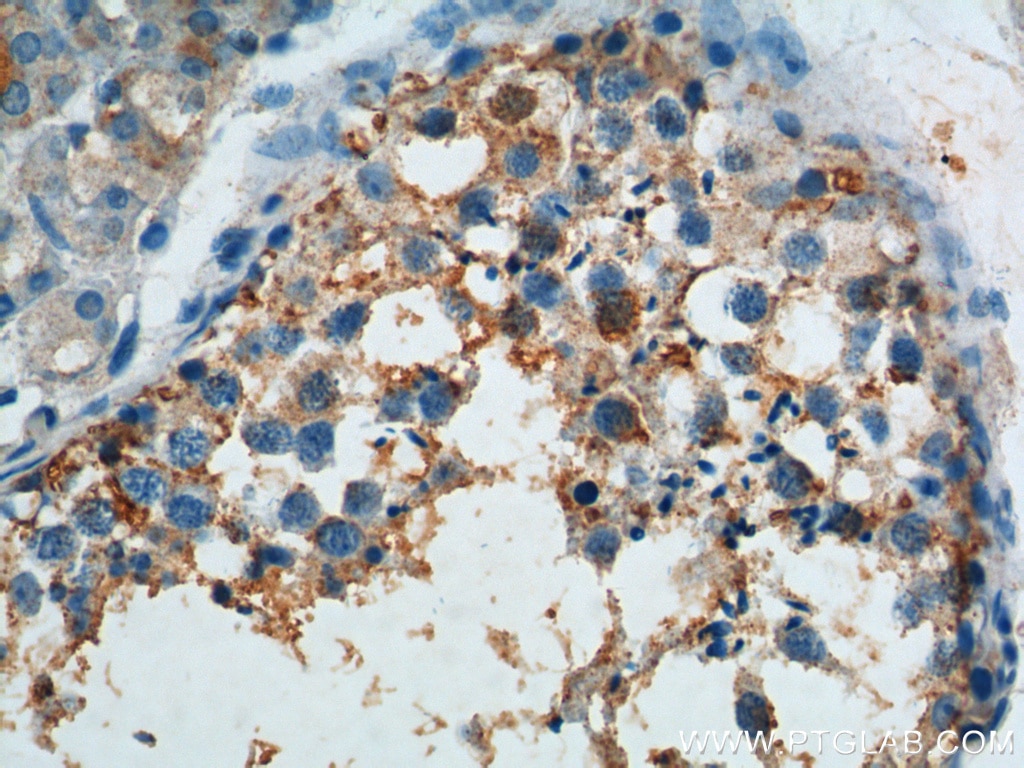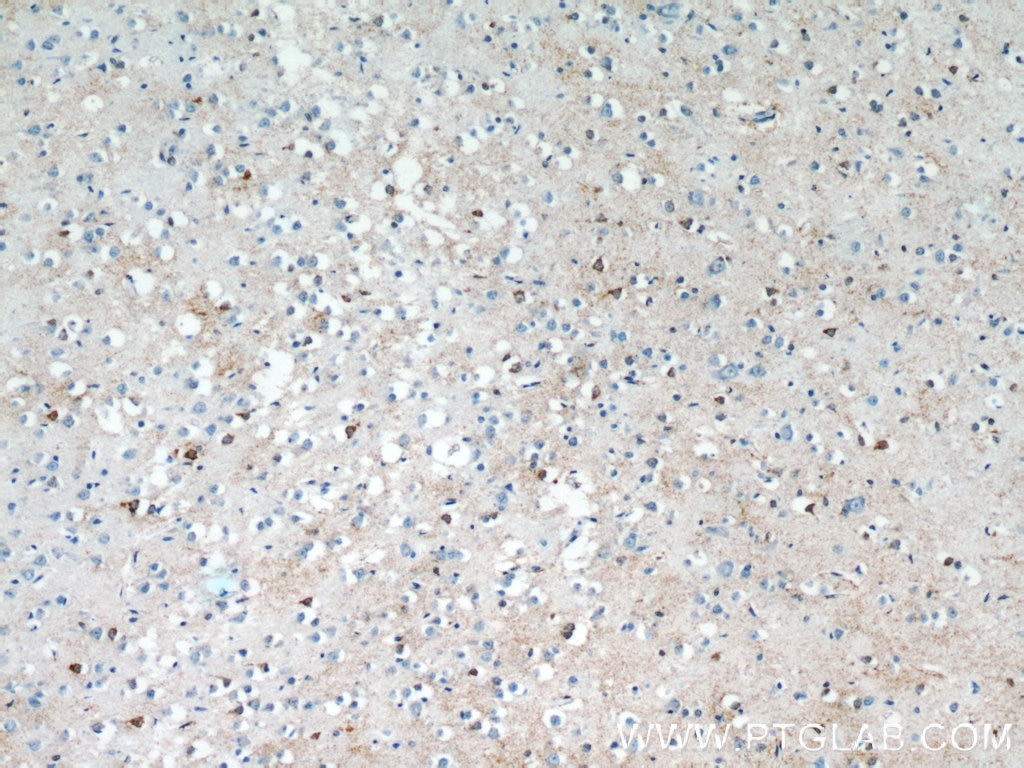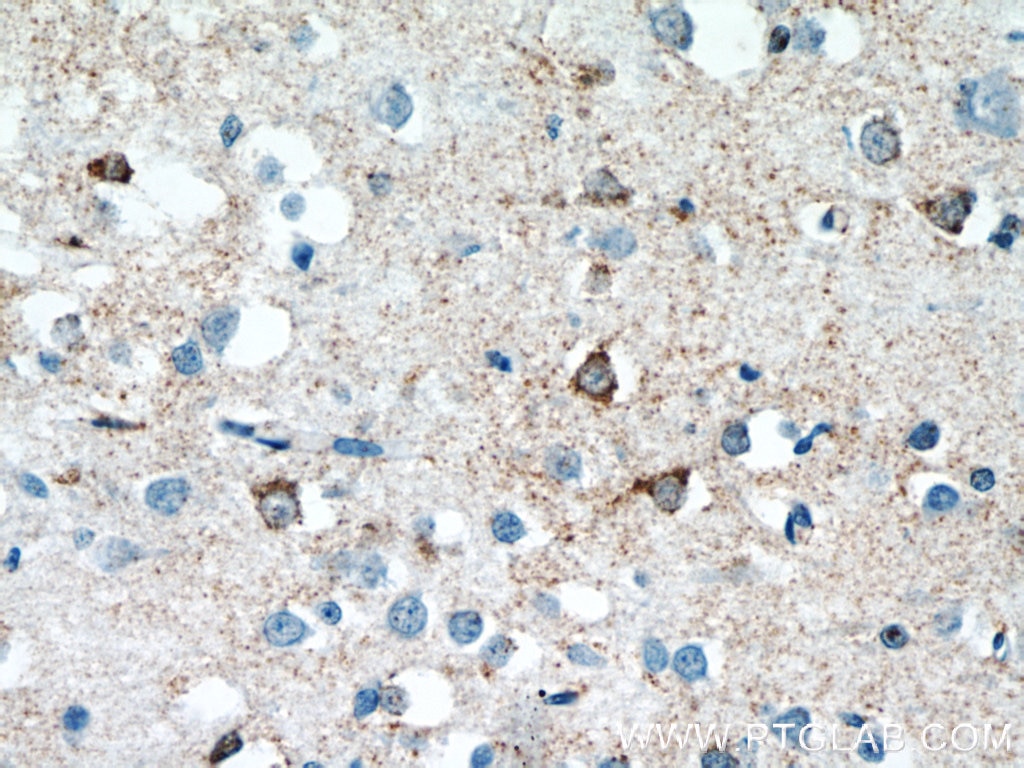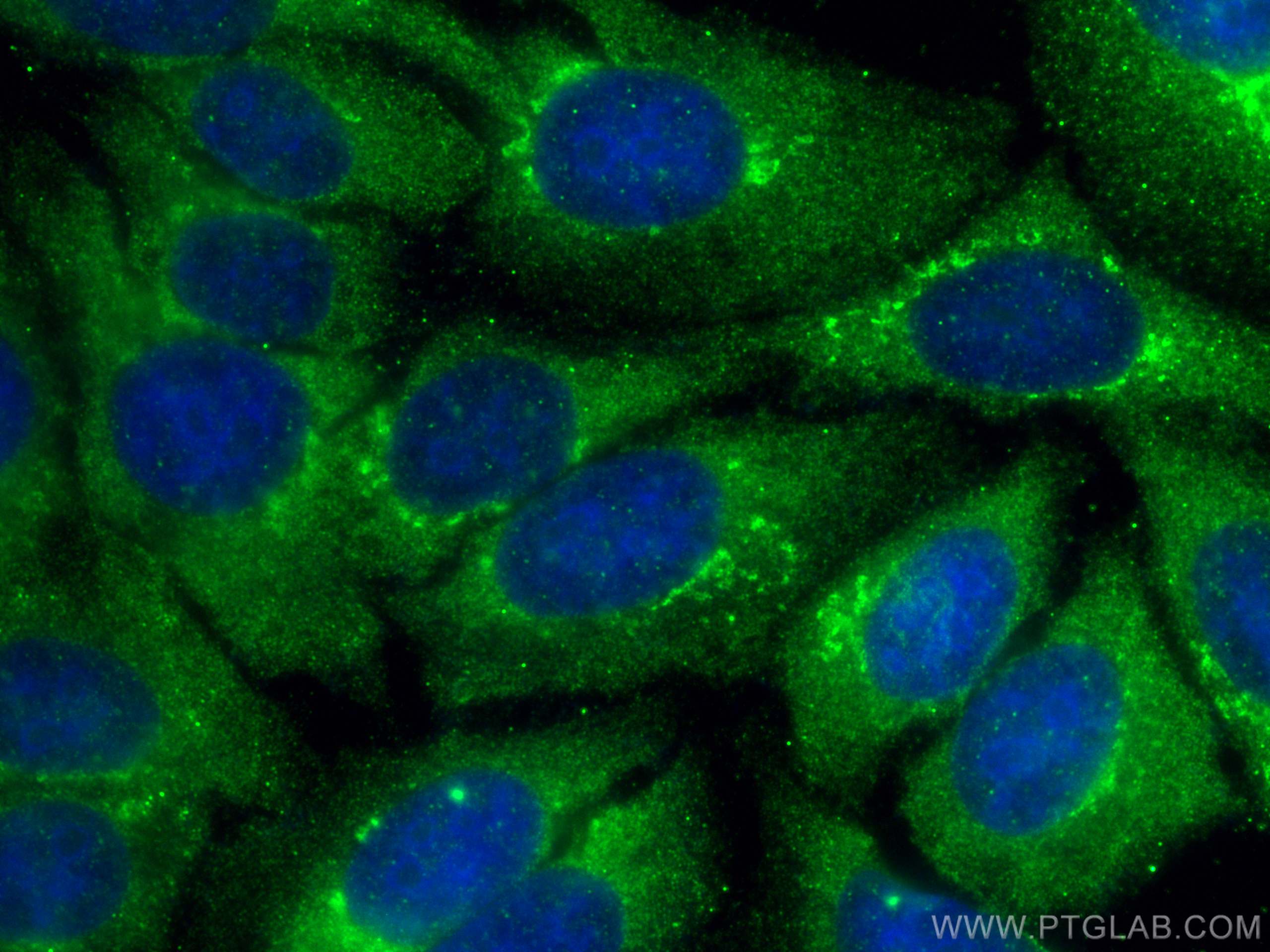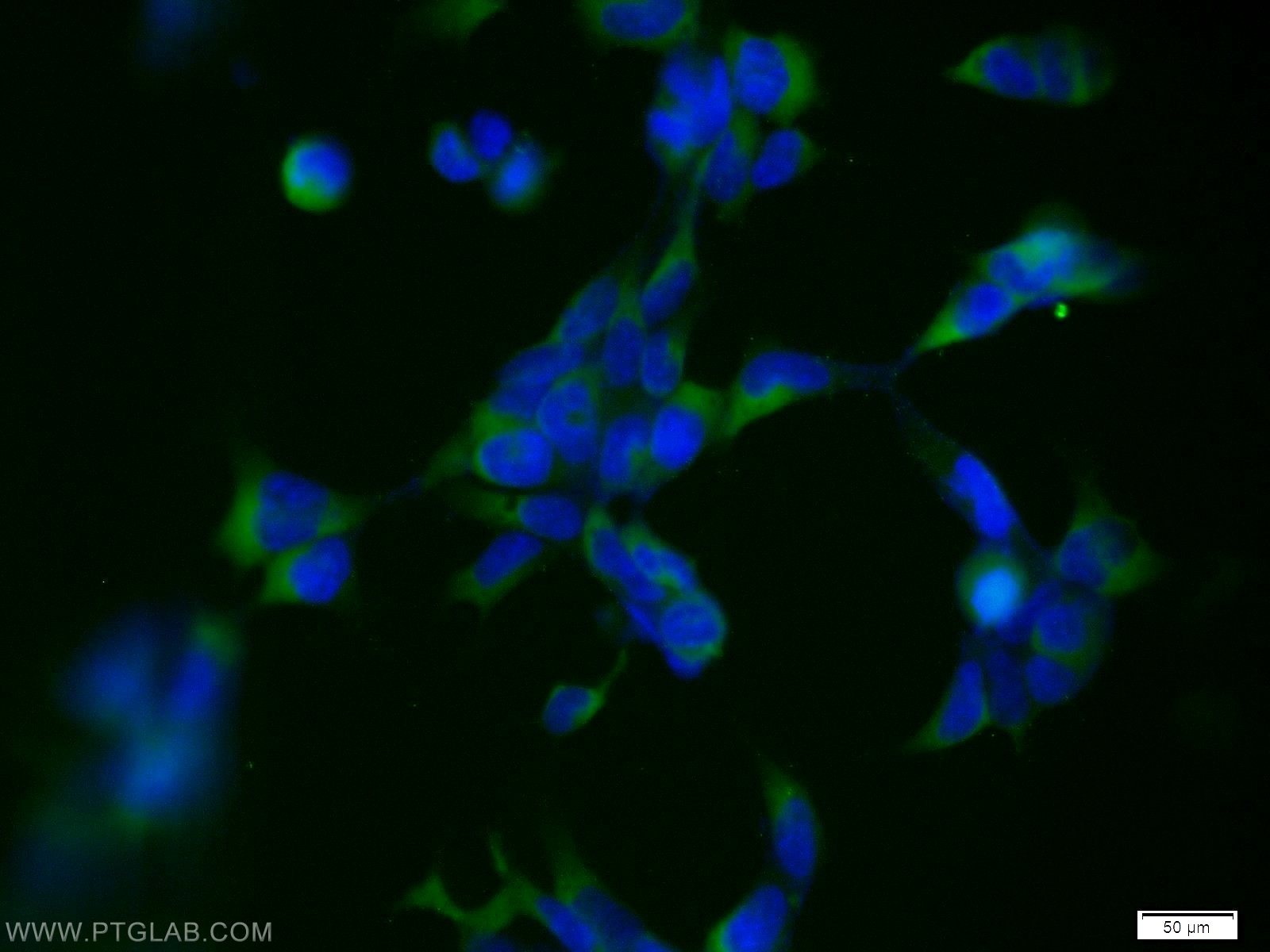Anticorps Polyclonal de lapin anti-SNAPIN
SNAPIN Polyclonal Antibody for WB, IHC, IF/ICC, IP, ELISA
Hôte / Isotype
Lapin / IgG
Réactivité testée
Humain, rat, souris
Applications
WB, IHC, IF/ICC, IP, ELISA
Conjugaison
Non conjugué
N° de cat : 10055-1-AP
Synonymes
Galerie de données de validation
Applications testées
| Résultats positifs en WB | cellules A375, cellules HEK-293, tissu cérébral de rat |
| Résultats positifs en IP | tissu cérébral de souris |
| Résultats positifs en IHC | tissu testiculaire humain, tissu cérébral humain il est suggéré de démasquer l'antigène avec un tampon de TE buffer pH 9.0; (*) À défaut, 'le démasquage de l'antigène peut être 'effectué avec un tampon citrate pH 6,0. |
| Résultats positifs en IF/ICC | cellules HepG2, |
Dilution recommandée
| Application | Dilution |
|---|---|
| Western Blot (WB) | WB : 1:200-1:1000 |
| Immunoprécipitation (IP) | IP : 0.5-4.0 ug for 1.0-3.0 mg of total protein lysate |
| Immunohistochimie (IHC) | IHC : 1:50-1:500 |
| Immunofluorescence (IF)/ICC | IF/ICC : 1:50-1:500 |
| It is recommended that this reagent should be titrated in each testing system to obtain optimal results. | |
| Sample-dependent, check data in validation data gallery | |
Applications publiées
| WB | See 12 publications below |
| IHC | See 2 publications below |
| IF | See 2 publications below |
Informations sur le produit
10055-1-AP cible SNAPIN dans les applications de WB, IHC, IF/ICC, IP, ELISA et montre une réactivité avec des échantillons Humain, rat, souris
| Réactivité | Humain, rat, souris |
| Réactivité citée | rat, Humain, souris |
| Hôte / Isotype | Lapin / IgG |
| Clonalité | Polyclonal |
| Type | Anticorps |
| Immunogène | SNAPIN Protéine recombinante Ag0101 |
| Nom complet | SNAP-associated protein |
| Masse moléculaire calculée | 15 kDa |
| Poids moléculaire observé | 15-18 kDa |
| Numéro d’acquisition GenBank | BC000761 |
| Symbole du gène | SNAPIN |
| Identification du gène (NCBI) | 23557 |
| Conjugaison | Non conjugué |
| Forme | Liquide |
| Méthode de purification | Purification par affinité contre l'antigène |
| Tampon de stockage | PBS with 0.02% sodium azide and 50% glycerol |
| Conditions de stockage | Stocker à -20°C. Stable pendant un an après l'expédition. L'aliquotage n'est pas nécessaire pour le stockage à -20oC Les 20ul contiennent 0,1% de BSA. |
Informations générales
Snapin, a protein of relative molecular weight of 15kd, is implicated in neurotransmission by binding to SNAP-25. Snapin was enriched in neurons and exclusively located on synaptic vesicle membrane, which may be a PKA target for modulating transmitter release through the cAMP-dependent signal-transduction pathway. This anitbody can recognize the 15-18kd(Monomer) and 30-36kd(Dimer) forms of SNAPIN.
Protocole
| Product Specific Protocols | |
|---|---|
| WB protocol for SNAPIN antibody 10055-1-AP | Download protocol |
| IHC protocol for SNAPIN antibody 10055-1-AP | Download protocol |
| IF protocol for SNAPIN antibody 10055-1-AP | Download protocol |
| IP protocol for SNAPIN antibody 10055-1-AP | Download protocol |
| FC protocol for SNAPIN antibody 10055-1-AP | Download protocol |
| Standard Protocols | |
|---|---|
| Click here to view our Standard Protocols |
Publications
| Species | Application | Title |
|---|---|---|
J Thromb Haemost Dysregulation of PLDN (pallidin) is a mechanism for platelet dense granule deficiency in RUNX1 haplodeficiency. | ||
Am J Hum Genet A BLOC-1 mutation screen reveals that PLDN is mutated in Hermansky-Pudlak Syndrome type 9. | ||
Autophagy Carbon nanotubes, but not spherical nanoparticles, block autophagy by a shape-related targeting of lysosomes in murine macrophages. | ||
Autophagy HIV-1 Vpr protein impairs lysosome clearance causing SNCA/alpha-synuclein accumulation in neurons. | ||
Autophagy SNAPIN is critical for lysosomal acidification and autophagosome maturation in macrophages. | ||
J Cell Biol LAMTOR/Ragulator is a negative regulator of Arl8b- and BORC-dependent late endosomal positioning. |
